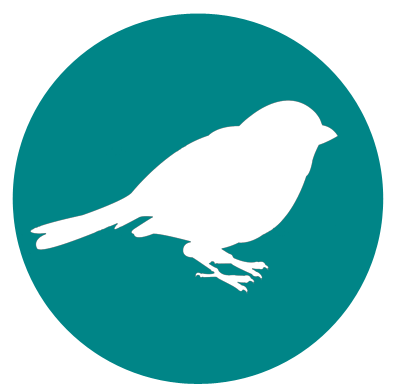Birding at Maumee Bay State Park
Oregon, OhioGeneral Information
Address
1400 State Park Rd, Oregon, OH 43616
County/Counties
Lucas
DeLorme Page Number and Coordinates
(7th Edition and earlier) Page 27, C-5
Nearest Town or City
Approximately 4 miles northeast of Oregon; roughly 6 miles east of Toledo, Ohio.
Directions from Nearest Town or City
From Wheeling Street on the east side of Oregon, proceed east on State Rte. 2 approximately 6 miles to North Curtice Road. Turn north for 2.5 miles to the park entrance. Directions from Rte. 2 to the park are clearly marked. There is a second entrance to the park one mile west along Cedar Point Road.
About Maumee Bay State Park
Maumee Bay State Park is situated on the south shore of Maumee Bay in extreme western Lake Erie. It is approximately 1500 acres in extent. Bird habitats are many: Open water of Maumee Bay, sand beach, inland ponds, swamp forest, wet meadow, upland meadow, and cottonwood/hawthorn/dogwood thickets. Access to all of the habitats is easy via the excellent system of blacktop roads in the park.
Visiting Information
Closed hours/season
Open all year during daylight hours.
Parking Areas
These are found throughout the park, including at the lodge, the nature center, the sledding hill, the beach area, picnic areas, and the campground.
Fees/Permits
There is no entrance fee for the park. There is a camping fee.
Restroom Facilities
There are restrooms in the lodge, in the nature center, and in the campground and beach areas. Some of these may be closed in the winter months.
Harmful Insects, Poisonous Plants, or Animals
Poison Ivy.
Restaurants in the Area
The lodge has an excellent restaurant; the Oregon Inn is located on Bayshore Road about 1/2 mile west of the park and is reputed to be excellent. Bayshore Supper Club is located another mile west on Bayshore Road.
Other Useful Information
The park also hosts an excellent lodge and conference area, modern cottages, a large campground, and a challenging golf course. It is a popular site for wind-surfing.
Other Birding Spots in the Area
The Bayshore power plant is located about 2 miles west of the park. Areas near the warm water outflow and along Bayshore Road east of the plant can be teeming with waterfowl and gulls during winter and early spring.
Mallard Club Marsh is immediately east of the park. It is an excellent cattail marsh and hosts many ducks, rails, herons, egrets, bitterns, and more.
Pearson Metropark is about 3 miles southwest of Maumee Bay State Park on State Rte. 2. There is some fine forest and edge habitat here.
Birds of Interest by Season

Winter
Raptors winter in fair numbers in the park. Of particular interest are Short-eared and Long-eared Owls, both of which occur on a regular basis. Short-ears are especially visible at dusk just north and west of the sledding hill in the more open meadows. Winter also brings Rough-legged Hawks to the park and occasionally rarer species like Snowy Owl and Northern Goshawk. Numbers of owls vary with the abundance of Meadow voles in the park. Depending on the extent of ice on Lake Erie, diving ducks and gulls can be abundant. Among the ducks, expect large numbers of scaups, Common Mergansers, and Common Goldeneyes. Gull watchers hope for Glaucous, Iceland, and lesser black-backed among the many Herring and Ring-billed Gulls. Songbirds are relatively scarce at this time of year, but observers can often find Snow Buntings and perhaps a Northern Shrike.
Spring
Spring arrives early here, with the arrival of more ducks in late January and February. Large flocks of blackbirds (some have overwintered) are common in February and March and the hawks are on the move on days when winds are out of the southwest. Good numbers of Red-tailed and Red-shouldered Hawks are often seen in March; occasional Golden Eagles are noted; accipiters, especially Sharp-shinned Hawks, become more common in April as do Ospreys; and in late April, large numbers of Broad-winged Hawks can be encountered. Numbers of Lapland Longspurs can often be seen migrating along the lakeshore from late February into April. The inland beach as well as the lakeside beach usually host a few shorebirds each spring, notably Sanderlings, Red Knots, and Ruddy Turnstones. Get there before the hoards of park visitors disturb the birds. Songbird migration in late April and May can be excellent with over 30 species of warblers present plus many other Neotropical migrants. Check the boardwalk area and the shrubby thickets for these migrants.
Summer
Bird activity is not as great during the summer months, but the fall migration of shorebirds begins in earnest in early July and early risers may find a few species on the beaches and grassy areas near the beach parking lot. Buff-breasted Sandpipers are occasionally seen here and Upland Sandpipers used to nest before the cottonwoods took over so much of the park. Eastern Meadowlarks and Savannah Sparrows use the fields for breeding and Yellow Warblers, Warbling Vireos, and Yellow-billed Cuckoos use the thickets and cottonwoods. American Woodcocks are common and Eastern Screech-owls are easy to hear in the swamp forest east of the nature center.
Fall
The fall season starts with the aforementioned shorebird migration in July. In mid-August, the first of the fall warblers are detected and peaks are reached just after Labor Day. A few warbler species will linger through October. Blue-winged and Green-winged Teals make up the vanguard of the duck migration in September and numbers of all species will build into November when the greatest diversity is reached. At this time of year. scoters and Long-tailed Ducks should be looked for on the bay and the rare Greater White-fronted Goose in flocks of abundant Canada geese. The large numbers of Bonaparte’s Gulls on the bay should also be scrutinized for their rarer cousins.

